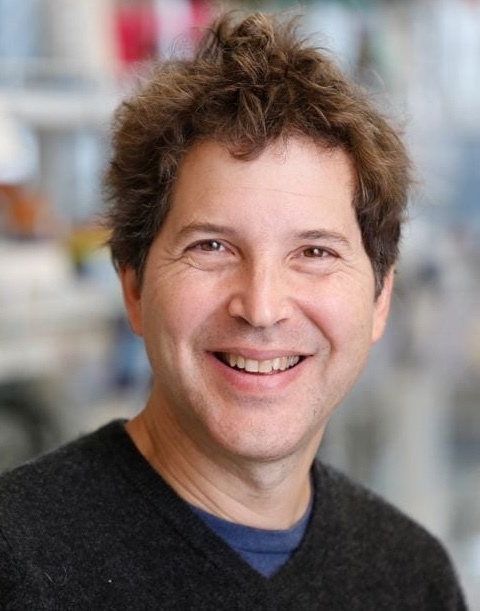NERSC Seminar Series
All events include remote attendance, are free and open to the public, and schedules are in Pacific time. Attendance information is posted prior to the talk.
Miss a Talk?
Videos of past presentations are posted to this page as they become available. Once edited and captioned, they are added to the NERSC YouTube channel.
2025
January 27, 2025
1:30 - 2:00 Pacific Time
Lattice QCD at NERSC by the MILC & Fermilab Lattice Collaborations
Steven Gottlieb, Indiana University
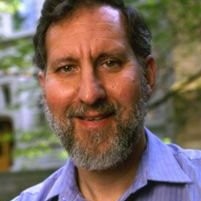
Steven Gottlieb, Indiana University
Abstract
This presentation will discuss Lattice QCD calculations performed at NERSC over a period of about 30 years, and say something about future expectations and needs. NERSC has been an essential resource for the MILC Collaboration, as well as other groups. It has allowed us to explore the spectrum of QCD, QCD at high temperature, the decays of mesons containing heavy quarks, and the anomalous magnetic moment of the muon. The latter two topics involve searching for new physics beyond the Standard Model of Elementary Particle and Nuclear Physics. Some information on performance of GPUs more recent that the A100s in Perlmutter will be presented.
Speaker Bio
Steven Gottlieb is Distinguished Professor Emeritus and Provost Professor of Physics Emeritus at Indiana University. He has been working on lattice QCD since the 1980s. He has been a member of the NERSC User Group Executive Committee, is currently past chair of the OLCF User Group Executive Board, and is Associate Editor in Chief of Computing in Science and Engineering.
2024
September 30, 2024
Making a 3D Map of the Universe at NERSC with DESI
Stephen Bailey, Berkeley Lab Physics Division
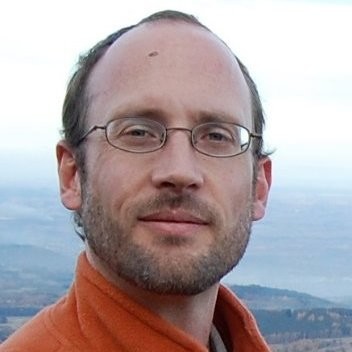
Stephen Bailey, Berkeley Lab
Abstract
The Dark Energy Spectroscopic Instrument (DESI) is creating the world’s largest 3D map of the Universe, observing tens of millions of galaxies, quasars, and stars over the course of a five-year survey. DESI uses NERSC as its primary data processing and analysis center, including real-time processing as data arrive from the telescope, yearly reprocessing for cosmology analyses, and support for individual science analyses ranging from single-core Jupyter notebooks through massively parallel analysis jobs. This talk will describe the DESI science program, how NERSC has enabled that work through its full ecosystem of services, and how NERSC and DESI have worked together to push the boundaries of what is possible for data-centric work at an HPC center.
About the Speaker
Stephen Bailey is a senior software developer in the Physics Division at Berkeley Lab. He has more than three decades of data management experience, starting with writing a matchmaking app for his high school. Along the way, he earned a B.S. in Physics from the University of Washington and a Ph.D. in Physics from Harvard University. He currently leads the Data Management Team for the Dark Energy Spectroscopic Instrument, where he uses NERSC to process raw data into useful data to study cosmology.
September 16, 2024
Low Mach Number Models of Fluid Flow
John Bell, Senior Scientist, Center for Computational Science and Engineering, Berkeley Lab
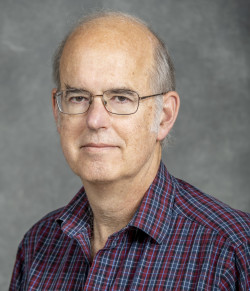
John Bell, Berkeley Lab
Abstract
Fluid dynamics describes a wide range of phenomena, from supersonic aircraft and supernovae to the mixing of cream in a cup of coffee and the dripping of water from a leaky faucet. An important characteristic of many flows of both scientific and technological significance is that the fluid velocity is much smaller than the speed of sound in the fluid. For these types of flows, referred to as low Mach number flows, we can exploit the separation of scales between velocity and sound speed to develop models and algorithms that are much more efficient than methods based on a generic fluid formulation. In this talk, I will discuss the development of these types of models over the past four decades, elucidating how basic methodology for incompressible flow can be extended to low Mach number flows in atmospheric science, astrophysics, and combustion. I will present several numerical examples that illustrate the development of these types of models and demonstrate how advances in both algorithms and HPC architectures have enabled simulations that would have been unheard of 50 years ago.
About the Speaker
John Bell is a senior scientist in the Applied Mathematics and Computational Research Division at Lawrence Berkeley National Laboratory. His research focuses on the development and analysis of numerical methods for partial differential equations arising in science and engineering. He has made contributions in the areas of finite volume methods, numerical methods for low Mach number flows, adaptive mesh refinement, stochastic differential equations, interface tracking, and parallel computing. He has also worked on the application of these numerical methods to problems from a broad range of fields, including combustion, shock physics, seismology, atmospheric flows, flow in porous media, mesoscale fluid modeling, and astrophysics. He is a fellow of the Society of Industrial and Applied Mathematics and a member of the National Academy of Sciences.
Video
The following is an unedited video of this presentation with autogenerated captions. Edited video with reviewed and corrected captions will be added when available.
August 26, 2024
A Quarter Century of Transient Science and Its Impact on Cosmology at NERSC
Peter Nugent, Senior Scientist and Division Deputy for Scientific Engagement, Applied Math and Computational Research Division, Berkeley Lab
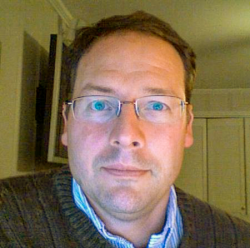
Peter Nugent, Berkeley Lab
Abstract
For the past 25 years, NERSC has played a pivotal role in the discovery of astrophysical transients and understanding the physics behind these events. It is well-positioned to do more of the same for many years to come. In this talk, Peter Nugent will highlight some of these discoveries, what we have learned about them, and how they have informed our current understanding of the cosmological parameters. He will also discuss how the field is changing and the role NERSC will play moving forward.
About the Speaker
Peter Nugent is a senior scientist at Berkeley Lab and is currently the division deputy for Scientific Engagement in the lab’s Applied Math and Computational Research Division. His research focuses on the use of high performance computing to tackle problems spanning observational data analysis and theoretical simulation in cosmology and astrophysics and, more recently, in epidemiology.
August 12, 2024
Faster! Faster! Highlights in Particle Accelerator Research at NERSC
Jean-Luc Vay, Senior Scientist and Head of the Advanced Modeling Program in the Accelerator Technology & Applied Physics Division at Berkeley Lab
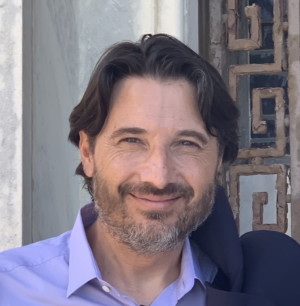
Jean-Luc Vay, Berkeley Lab
Abstract
Particle accelerators are among the most complex, largest (and most expensive) machines ever built, with applications spanning from discovery science to national security, industry, and medicine. Progress in particle accelerator research is intimately linked to progress in the calculations of beam particle trajectories in a carefully tailored series of elements that create the electric and magnetic fields to accelerate and guide the particles. Computer simulations are thus naturally an integral part of this research. In this talk, I will present some highlights of simulations that were performed at NERSC over the past decades in particle accelerator research and conclude on ongoing work and future directions.
About the Speaker
Jean-Luc Vay has used NERSC systems and resources since he joined Berkeley Lab as a postdoc at the end of 1996. He is now a senior scientist and head of the Advanced Modeling Program in the Accelerator Technology and Applied Physics Division. He leads theoretical and computational research on beams, plasmas, particle accelerators, and fusion energy.
Vay is a fellow of the American Physical Society, a senior member of IEEE, and the recipient of the 2013 US Particle Accelerator School Prize for Achievement in Accelerator Physics & Technology, a 2014 NERSC Award for Innovative Use of High-Performance Computing, a 2022 ACM Gordon Bell Prize, and the 2023 Berkeley Lab Director’s Achievement Award in the Scientific Team section.
Video
The following is an unedited video of this presentation with autogenerated captions. Edited video with reviewed and corrected captions will be added when available.
August 5, 2024
Big Bang, Big Data, Big Iron: 50 Years of Cosmic Microwave Background Studies at NERSC
Julian Borrill, Senior Scientist in the Physics Division at Berkeley Lab and a Senior Research Physicist at the Space Sciences Laboratory at UC Berkeley

Julian Borrill, Berkeley Lab
Abstract
The Cosmic Microwave Background (CMB) is a uniquely rich source of scientific information, encoding as it does all of fundamental physics and cosmology. Ever since it moved to Berkeley Lab, NERSC has been the world center for CMB data analysis on supercomputers. In this talk I will describe some of the highlights of this work over the last 25 years and the challenges coming over the next 25 years.
About the Speaker
Julian Borrill is a senior scientist in the Physics Division at Berkeley Lab, and a senior research physicist at the Space Sciences Laboratory at UC Berkeley.
His current work is focused on developing the tools needed to manage the huge data sets being gathered by current and future Cosmic Microwave Background missions and deploy them efficiently on multiple generations of high-performance computing architecture.
He is the project data scientist and data management lead for CMB-S4, data management committee member and simulations lead for the Simons Observatory, and data management committee member and US data lead for LiteBIRD. For the last 20 years he has also managed the CMB community HPC resources at the DOE's National Energy Research Scientific Computing Center.
Video
The following is an unedited video of this presentation with autogenerated captions. Edited video with reviewed and corrected captions will be added when available.
July 29, 2024
Earth System Modeling for Actionable Science
Ruby Leung, Battelle Fellow, Earth Science, Chief Scientist of Energy Exascale Earth System Model (E3SM), Pacific Northwest National Laboratory
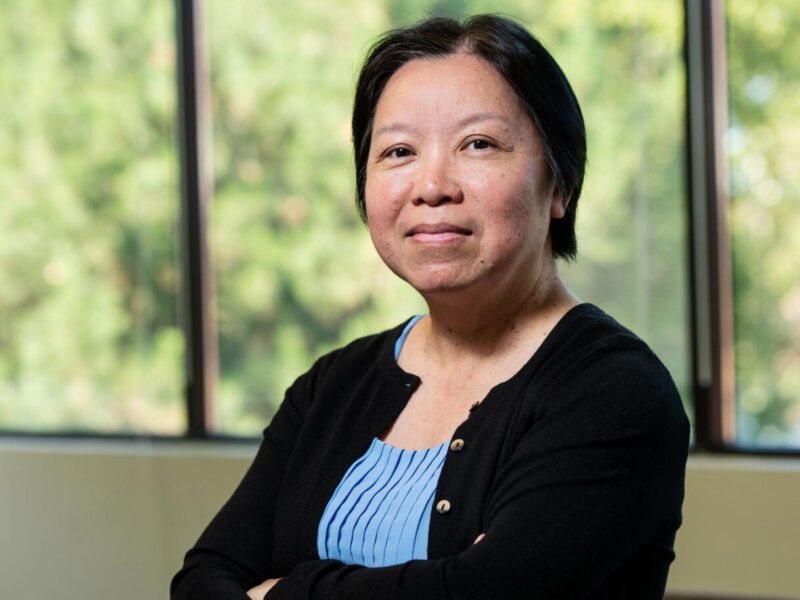
Ruby Leung, Pacific Northwest National Laboratory
Abstract
Modeling is a key tool for understanding climate change and its effects in both the present and the future, and the computational power provided by NERSC systems has made many researchers’ climate models possible. One of those researchers, Ruby Leung of Pacific Northwest National Laboratory (PNNL), will discuss her work on Earth system modeling for actionable science and the role NERSC plays in it.
About the Speaker
Ruby Leung is a Battelle Fellow at Pacific Northwest National Laboratory. Her research broadly cuts across multiple areas in modeling and analyzing climate and the hydrological cycle, including land-atmosphere interactions, orographic processes, monsoon climate, climate extremes, land surface processes, and aerosol-cloud interactions. Her research on climate change impacts has been featured in Science, Popular Science, the Wall Street Journal, National Public Radio, and major newspapers.
Leung is also the chief scientist of the Energy Exascale Earth System Model (E3SM) supported by the U.S. Department of Energy, a major effort to develop state-of-the-art capabilities for modeling human-Earth system processes on DOE’s next-generation high performance computers. She has organized key workshops sponsored by DOE, the National Science Foundation (NSF), the National Oceanic and Atmospheric Administration (NOAA), and NASA, and served on advisory panels and committees that define future priorities and opportunities in Digital Twin, AI/ML, climate modeling, hydroclimate, and water cycle research. She has published over 500 papers in peer-reviewed journals and is an editor of the American Meteorological Society Journal of Hydrometeorology. Leung is an elected member of the National Academy of Engineering and the Washington State Academy of Sciences. She is a fellow of the American Meteorological Society (AMS), American Association for the Advancement of Science (AAAS), and American Geophysical Union (AGU). She is the recipient of the AMS Hydrologic Sciences Medal in 2022, AGU Global Environmental Change Bert Bolin Award and Lecture in 2019, and the AGU Atmospheric Science Jacob Bjerknes Lecture in 2020. In 2021, Leung received the DOE Office of Science Distinguished Scientist Fellow Award.
Video
The following is an unedited video of this presentation with autogenerated captions. Edited video with reviewed and corrected captions will be added when available.
July 22, 2024
The JGI-NERSC Partnership: Lessons in Data-Intensive Computing at Scale
Kjiersten Fagnan, Chief Informatics Officer, DOE Joint Genome Institute

Kjiersten Fagnan, Joint Genome Institute)
Abstract
Fifteen years ago, the Joint Genome Institute (JGI) and NERSC formed a partnership to support the exponentially increasing scale of genomics data generation. There were close collaborations on data management, high-performance computing, and complex workflow deployments that have been foundational to JGI's efforts in resilient, distributed computing. In this talk, I'll highlight past successes, scientific discoveries, and JGI's NESAP-IRI Pathfinder project.
About the Speaker
Kjiersten Fagnan began working with JGI in 2012 as a NERSC bioinformatics computing consultant, after completing a petascale postdoctoral fellowship at NERSC and LBL’s Computational Research Division. As a postdoc, her research focused on stable and accurate computational methods for reacting subsurface flows and evolved into scalable methods for scientific data analysis. In 2014 Dr. Fagnan became the JGI-NERSC Engagement Lead with a focus on adapting JGI workloads to run on supercomputing hardware and worked closely with staff to understand the data-intensive nature of JGI workloads. Dr. Fagnan was appointed CIO of JGI in 2016 and, in 2018, was hired to be the JGI’s Data Science and Informatics department head. In 2018, Fagnan was part of the Gordon Bell prize-winning team at the Supercomputing conference, SC’18, led by researchers at Oak Ridge National Laboratory. Fagnan has been a Distinguished Speaker at IBM Research in Almaden, where she presented work related to distributed data and workflow management. Fagnan is also a co-PI for the National Microbiome Data Collaborative, where she leads infrastructure and user-centered design efforts.
Video
June 24, 2024
Solving the Puzzling and Formidable Multiscale Multi-Physics Problems in Tokamak Edge
CS Chang, Princeton Plasma Physics Laboratory
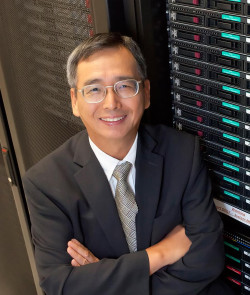
CS Chang, Princeton Plasma Physics Laboratory
Abstract
Tokamak magnetic fusion experiments have long found that the core plasma performance and the fusion reactor operation condition are mostly governed by the edge plasma condition: The tail is wagging the dog. Experimental observations of edge plasma behaviors were mystifying to plasma physicists who had traditional theoretical tools. Edge plasma is governed by nonlinear interactions between multiscale multi-physics phenomena in odd geometry. A first principles-based code was needed to attack such complex problems in realistic geometry on large-scale computers, but it was a difficult mission without a proper platform. In this talk, I would like to highlight some ITER critical physics problems and describe how NERSC has contributed to solving them or discovering them. I have been a user of NERSC systems for almost 50 years since the CTRCC and MFECC era. The width and depth of my research have grown in a transformative way together with the growth of computing power.
About the Speaker
CS Chang has led several large-scale scale, multi-institutional, multidisciplinary projects, which included a Fusion Simulation Prototype Center, SciDAC-2, SciDAC-3, and SciDAC-4 Fusion Edge Simulation centers, the ECP Whole Device Modeling project (Co-lead), and the ECP co-design project CoPA (Co-design of Particle Application, Institutional PI). The unique fusion gyrokinetic code XGC (X-point included Gyrokinetic Code) developed by his team has become one of the representative US exascale codes, co-developed in tight collaboration among physicists, applied mathematicians, computer scientists, and performance engineers. CS Chang is a managing principal physicist at Princeton Plasma Physics Laboratory and a “Sits with Committee” member at Princeton University PICSciE (Princeton Institute for Computational Science & Engineering). He is a fellow of the American Physical Society and an ITER Science Fellow. Before joining Princeton, he was a physics professor at Korea Advanced Institute of Science and Technology and, jointly, a research professor at Courant Institute of Mathematical Sciences, New York University. In his early days, he held a senior scientist position at General Atomics. He earned a B.S. degree in physics from Seoul National University in 1974 and a Ph.D. degree in physics from The University of Texas at Austin in 1979.
Video
The following is an unedited video of this presentation with autogenerated captions. Edited video with reviewed and corrected captions will be added when available
June 17, 2024
Intuitive Supercomputing for X-Rayers
Dula Parkinson, Advanced Light Source, Berkeley Lab
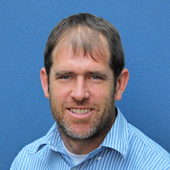
Dula Parkinson
Berkeley Lab
Abstract
Upgraded accelerators like the Advanced Light Source (ALS) at Berkeley Lab make brighter X-ray beams for new science and faster experiments, attracting an increasing variety of new users. Supporting these users in handling the big data during their experiments has pushed us to provide them with computing tools that are powerful but intuitive to use. NERSC has been an essential partner along the way, including most recently in the SuperFacility effort. This talk will describe this team science effort, and the essential role NERSC has played in the success of ALS studies of deep earth, deep space, and a lot in between.
About the Speaker
Dula Parkinson is the Deputy for Photon Science Operations and the Program Lead for Diffraction and Imaging at the Advanced Light Source (ALS) at Lawrence Berkeley National Laboratory. After completing a PhD in physical chemistry at UC Berkeley in 2006, he was a postdoctoral fellow with Carolyn Larabell, using soft X-ray nano-tomography to collect 3D images of single cells. In 2010, he became a beamline scientist at the ALS, leading the Hard X-ray micro-tomography program at Beamline 8.3.2, working with ALS users to image a variety of samples. He has been a proud user of NERSC since 2010. Since then, he has been involved in efforts to connect experimental and computational facilities and provide users with access to powerful computing and data management resources through intuitive interfaces.
Video
Due to technical issues, video is unavailable for this talk.
June 3, 2024
Prediction and Design of Protein Interactions
David Baker, Institute for Protein Design / University of Washington
Abstract
Proteins mediate the critical processes of life and beautifully solve the challenges faced during the evolution of modern organisms. Our goal is to design a new generation of proteins that address current-day problems not faced during evolution. In contrast to traditional protein engineering efforts, which have focused on modifying naturally occurring proteins, we design new proteins from scratch to optimally solve the problem at hand. I will describe these studies and also the proteome-level prediction of protein interactions, and the key contributions NERSC has made to both efforts.
About the Speaker
David Baker is the director of the Institute for Protein Design, a Howard Hughes Medical Institute Investigator, a professor of biochemistry, and an adjunct professor of genome sciences, bioengineering, chemical engineering, computer science, and physics at the University of Washington. His research group is focused on the design of macromolecular structures and functions.
Baker has published more than 600 research papers, been granted more than 100 patents, and cofounded 17 companies. Over 70 of his mentees have gone on to independent faculty positions.
Baker received his PhD in biochemistry with Randy Schekman at UC Berkeley and did postdoctoral work in biophysics with David Agard at UCSF. He is a recipient of the Breakthrough Prize in Life Sciences and a member of the National Academy of Sciences and the American Academy of Arts and Sciences.
Video
May 20, 2024
Reaction-driven Formation of Novel Active Sites on Catalytic Surfaces
Manos Mavrikakis, University of Wisconsin-Madison
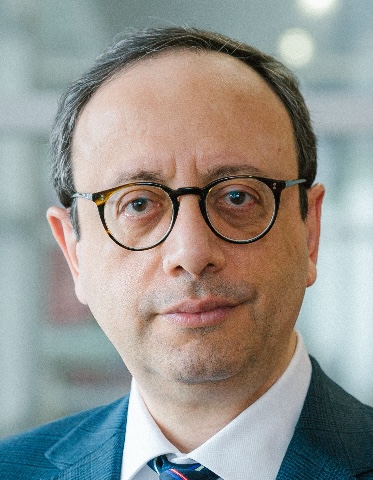
Manos Mavrikakis, Department of Chemical and Biological Engineering, University of Wisconsin-Madison
Abstract
Adsorption of reactants and reaction intermediates on solid catalytic surfaces can lead to significant changes in the surface structure, including, as shown in high-pressure Scanning Tunneling Microscopy (STM) experiments, ejection of metal atoms and formation of metal clusters while the reaction is taking place. Depending on the specific system, these clusters provide new, more favorable reaction paths than the typically considered active sites. First-principles computations coupled with kinetic Monte Carlo simulations, all performed at large scale on NERSC resources, enable a more realistic picture of the catalyst’s surface and its active sites as a function of reaction conditions and the identity of reactants and that of critical intermediates. Insights derived from our analysis can inform the design of new catalysts with improved activity, selectivity, and stability characteristics.
About the Speaker
Manos Mavrikakis is the Ernest Micek Distinguished Chair, James A. Dumesic Professor, and Vilas Distinguished Achievement Professor at the University of Wisconsin-Madison. He has been a NERSC user for more than 24 years.
Video
April 15, 2024
What We Have Learned about the Universe from Low-Energy Neutrino Physics Experiments and NERSC’s Role in the Discoveries
Alan Poon, Berkeley Lab
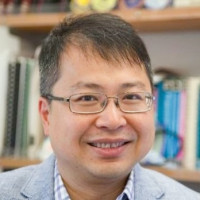
Alan Poon, Nuclear Science Division, Berkeley Lab
About the Speaker
Alan Poon is the program head for Fundamental Symmetries and Neutrinos and a senior physicist in the Nuclear Science Division at Berkeley Lab. He has been a NERSC user for over 20 years.
Abstract
NERSC is instrumental in discovering neutrino flavor transformation and various investigations of fundamental neutrino properties. These discoveries represent a paradigm shift in our understanding of neutrinos. They establish the massive nature of these elusive particles, contrary to their prescription in the Standard Model of Elementary Particles.
In this talk to commemorate NERSC’s 50th anniversary, I will discuss the neutrino discoveries it enabled in the golden era of neutrino physics in the previous three decades. These notable results include the resolution of the Solar Neutrino Problem and the discovery of neutrino flavor transformation by the Sudbury Neutrino Observatory, recognized in the 2015 Nobel Prize in Physics and the 2016 Breakthrough Prize in Fundamental Physics; the discovery of neutrino oscillations in reactor neutrinos and the measurement of terrestrial radiogenic heat production through geo-neutrinos by the KamLAND experiment, recognized in the same Breakthrough Prize that year; the investigations of whether neutrinos are their own antiparticles though a rare nuclear decay with a lifetime exceeding 12 orders of magnitude beyond the age of the Universe by the MAJORANA DEMONSTRATOR, LEGEND, and the CUORE experiments; and the most sensitive laboratory measurement of the neutrino mass by the KATRIN experiment.
Video






